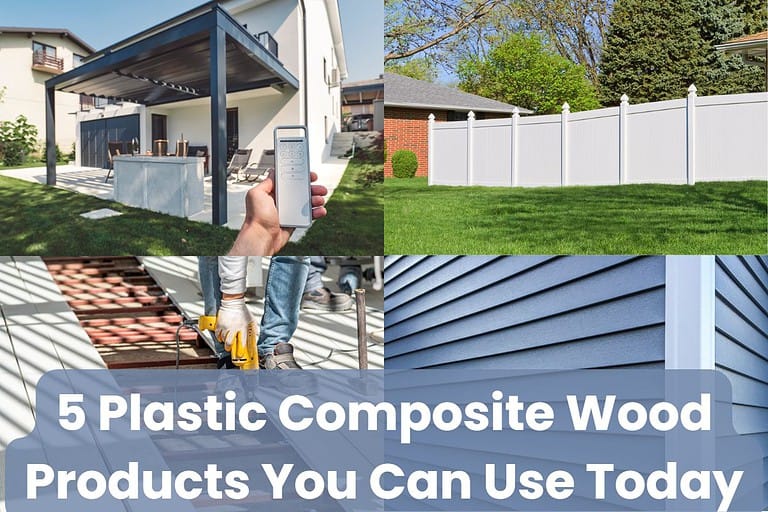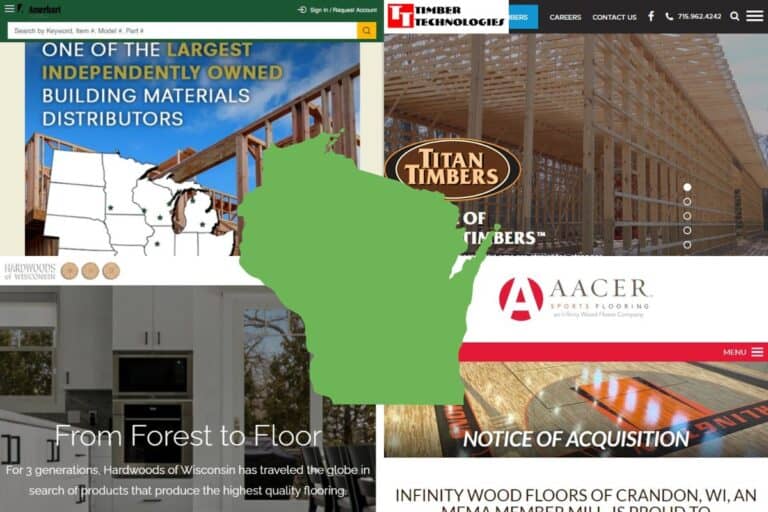Composite Decking-What Is It And Is It Better Than Wood?
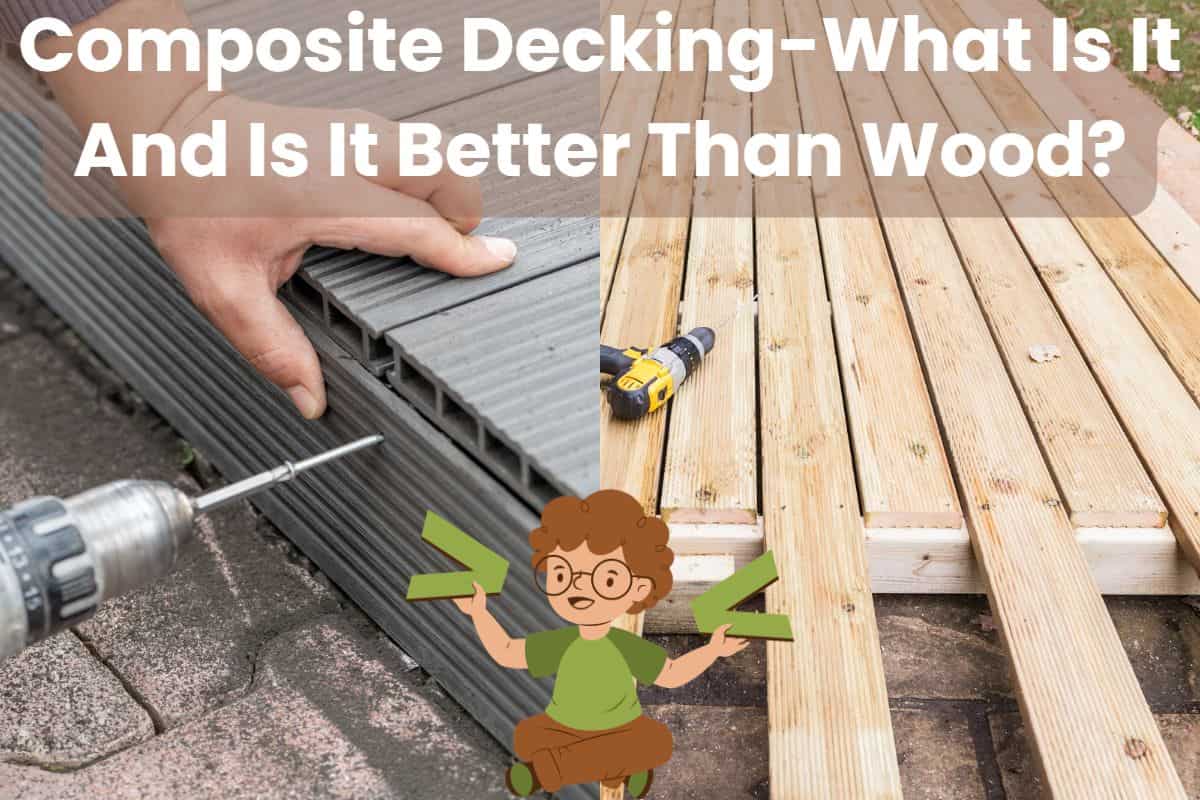
Decking is essential to any outdoor living space – it provides an attractive surface for relaxation, entertainment, and dining.
While wood has been the traditional decking material for many years, homeowners are now exploring the benefits of composite decking.
If you’re new to the decking world, you may wonder what composite decking is and if it’s better than wood.
Composite decking is a decking material made from recycled wood fibers or wood flour, plastics, and bonding agents. Although costly, composite decking is better than its wood counterparts as it’s eco-friendly, highly durable, and requires less maintenance.
In the rest of this article, I’ll discuss how composite decks are made and how they compare to their wood counterparts.
This discussion lets you decide what decking is best for your outdoor space.
So let’s dive into the world of composite decks and discover the advantages they offer over wood.
The Process of Making Composite Decks
I mentioned that composite decking is made from reclaimed wood and recycled plastic film.
Ideally, wood flour or wood fibers are blended with low-density polyethylene (LDPE) and high-density polyethylene (HDPE) to produce composite decking.
Here is the entire process:
Material Selection

The first step in making composite decks is selecting appropriate materials.
The components of reclaimed wood usually used for this purpose include sawdust, wood fibers, or wood chips.
Although LDPE and HDPE are the preferred option for composites like Trex, polypropylene (PP), polyvinyl chloride (PVC), and polyethylene (PE) are also suitable options.
Finally, high-quality color pigments, suitable UV stabilizers, and other additives are also prepared in readiness for mixing.
Mixing
The next step is to mix all the components until they form a homogenous blend. The ratio of the specific ingredients varies from brand to brand. In most cases, wood makes up the highest proportion.
Wood and recycled plastic are blended with binding agents. This helps to hold the mixture together and allows it to hold its shape.
Extrusion
The mixture is then poured into an extruding machine that compresses, heats, and shapes it into the desired form.
Generally, the machine requires high pressure, large amounts of heat, and low speed.
The extrusion process creates long continuous pieces along with the desired wood-grain pattern.
Cooling
The extruded material is then passed through a series of water-cooled rollers for cooling. Once it cools and solidifies, it’s cut into decking boards of the desired shape, size, and length.
Finishing
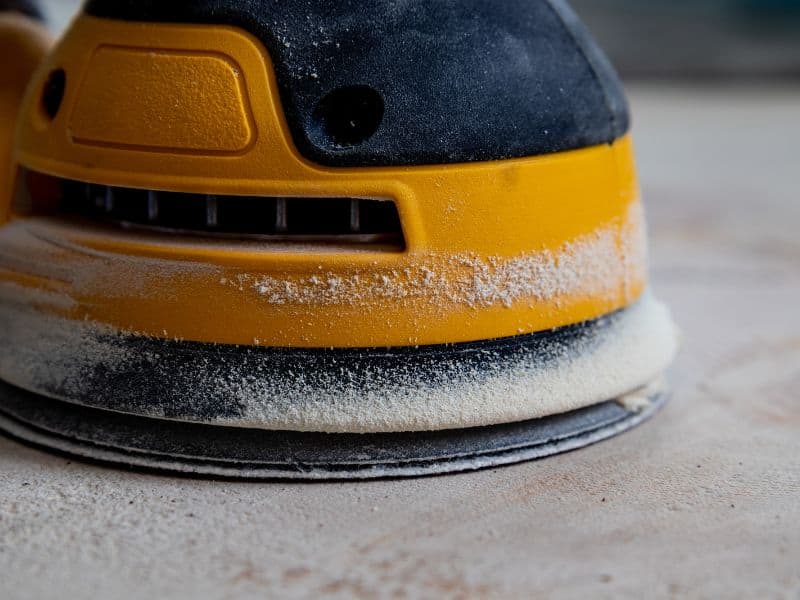
Finally, the material is put through a finishing process. This involves sanding, texturing, and staining to give it its desired look.
Moreover, a protective coating is added to enhance its durability and resistance to the elements.
The finished boards are inspected for flaws before being packed and shipped.
Compression Molding
Besides the extrusion method, compression molding is the second method that can be used to make composite decks.
Compression molding involves placing the mixture into a heated wood grain mold, where it’s pressed together under high pressure to create a physical bond.
Heat and pressure are used to form the composite decks into their desired shape.
Once cooled and solidified, the deck boards are sanded, textured, and stained as in the extrusion process.
Types of Composite Decking
There are three main types of composite decking:
- Solid composite decking
- Hollow composite decking
- Capped composites
Solid Composite Decking
These are solid and heavy boards suitable for permanent floors in homes, hotels, and offices. They are also used on pathways and in swimming pools.
The only downside is that they are highly susceptible to warping during extreme weather conditions because they are heavy.
Hollow Composite Decking
These are light composite boards due to their hollow nature. They are suitable for installing cables, siding, and cladding.
The only downside is that they are not resistant to impacts due to their hollow nature. As a result, they require fascia or cap boards at the edges.
Capped Composite Decking
They are made up of a core and cap. The core consists of recycled HDPE or LDPE and organic wood filler.
On the other hand, the cap is made of a synthetic material that increases resistance to scratches, stains, and discoloration.
These composites are suitable for swimming pool decks and garden areas.
Comparison Between Composite Decking and Wood Decking
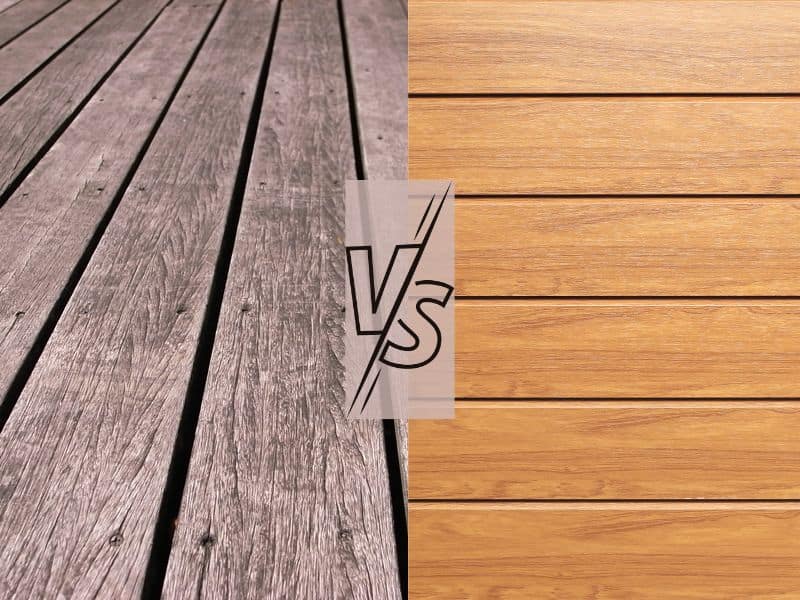
Composite decking and wood decking are the two main decking materials you’ll come across on the market.
Choosing between the two can be challenging, especially if you’re new to the decking world. As a result, we have this comparison to help you make an informed decision.
Durability and Lifespan
Composite decks are more durable than their wood counterparts. This is because composites comprise a mixture of recycled materials such as polypropylene, polyethylene, and polyvinyl chloride.
These materials hold up better against the elements and are more resistant to wear and tear than wood.
Moreover, composite decks have a greater lifespan than wood decks. While composite decking has an average lifespan of between 25 and 30 years, its wood counterparts have a lifespan of only 10 to 15 years.
Cost
Composite decks are more expensive than wood decking.
The average cost for a composite deck is between $15 and $30 per square foot. On the other hand, wood decking costs between $6 to $8 per square foot.
Although composite decking is pricey, it pays for itself within a few short years due to its minimal annual maintenance cost.
Resistance to Moisture
Unlike wood decking, composite decking is highly moisture resistant, thanks to its synthetic makeup.
This makes composite decking suitable for damp environments where wood decks warp and rot due to moisture infiltration.
Appearance
Wood decking is the preferred choice by many due to its natural beauty. The warm look of the wood makes it attractive to many.
On the contrary, composite decks lack the natural variations found in wood. Consequently, it’s only suitable if you need a uniform appearance on your deck.
Maintenance Requirements
Wood decking is highly susceptible to the elements like rain and sun. Therefore, it requires regular maintenance in terms of staining, painting, and sealing to prevent warping.
In contrast, composite decks require less maintenance and can continue to look great for many years with just regular sweeping and washing.
Workability

Composite and wood decks are easy to work with in terms of cutting and fastening. However, composite decks take the lead when it comes to bending. It’s easier to bend composite decking by heating it.
The table below summarizes the comparison between wood and composite decking:
| Feature | Composite Decking | Wood Decking |
| Lifespan | 25-30 years | 10-15 years |
| Cost | $15-$30 per sq ft | $6-$8 per sq ft |
| Workability | Easy to bend | Hard to bend |
| Appearance | Lacks the natural wood look | Natural wood look |
| Maintenance | 2-4 hours of cleaning per year | 16-32 hours of painting, cleaning, and staining per year |
Table 1: Comparison between composite and wood decking
Final Thoughts
The best way to choose between wood and composite decks is to determine what suits your needs and budget.
Wood decking is the perfect option if you have a limited budget and don’t mind regular maintenance.
Otherwise, composite decking is your go-to option if you’re after a long-lasting deck that requires minimal maintenance.
Now that you know the difference between composite and wood decks, check out these examples of using sustainable construction.



